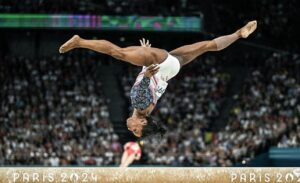For the past twenty months, the United States and the world at large have been dealing with the COVID-19 pandemic. Sickness, death, and general suffering caused by the virus, both physically and mentally, have taken their toll on people. So the most basic and fundamental question is, when does the pandemic end? The answer is much more complicated than first thought, especially because there is no clear-cut definition of what would constitute an end to masks, lockdowns, and the like.
The criteria that is often talked up by medical experts as a way to finally end the pandemic include 95% or higher vaccination rates, vaccine approvals for people of all ages including our youngest citizens, and a low to minuscule (<5%) virus transmission rate. But is there or will there ever be universal criteria that doctors foreign and domestic approve of? Simply said, probably not, so the pandemic as it stands will likely continue. But for the sake of this county, let’s hope COVID-19 is a thing of the past come 2023.
Conflicting Opinions
Right from the start of the pandemic, there were conflicting opinions as to the best way to solve COVID-19. From the outset, we heard two weeks to stop the spread, and as a result, America entered its’ first lockdown. Now obviously two weeks was never a realistic timeline as to how long it would take to overcome the virus. A more accurate estimate would have been two years to stop the spread. Unfortunately, March 11, 2022, will mark exactly two years since COVID-19 was declared a worldwide pandemic.
It is important to note that everything COVID-19 has thrown at us has essentially been new. In other words, no doctor, health expert, or citizen could predict or necessarily react in the best possible manner to a pandemic they had never experienced before. No textbook or research into pandemics occurring 100 years ago could truly prepare the world to deal with COVID-19. That is the inherent flaw with this pandemic that people often overlook.
As mentioned, COVID-19 seems to have a diversity of opinions just as broad as its’ long list of variants. Some say universal vaccination rates, no matter how we get there (mandates), is the best way to end the pandemic. Others argue lockdowns are necessary when an outbreak of the virus occurs, especially in a local setting. Some people also say that as the virus has swept the county with over 48 million confirmed cases, natural immunity is or will shortly be achieved and the best course of action is to sit back and let the virus spread. The list of potential solutions goes on and on, but agreement on those remedies is scant.
The virus has become politicized and highly partisan, which means that one solution will never be met with universal agreement. The political parties as well as people who call themselves ideologically Liberal or ideologically Conservative have highly different opinions as to the best course of action moving forward. That much is obvious. What they specifically believe in regards to COVID-19 is unimportant. What is important is the need for compromise on the virus. How likely is it that the two sides come together on a solution that benefits all people? Unfortunately, not too likely. So as it stands, the pandemic in its highly politicized form will continue.
The New Threat
Over the past several days, the so-called “omicron” vriant has become Americans’ next headache. At the time of this writing, the variant has not yet reached the U.S., at least not to our knowledge. America’s top infectious disease expert, Dr. Anthony Fauci, says it is ‘inevitable’ that omicron sweeps our shores. He also said that the travel restrictions imposed on 8 African Countries were necessary to blunt the variant’s impact.
Omicron is the latest in an ever-increasing line of COVID-19 strains that have afflicted us over the past several months. Perhaps the most impactful variant has been the Delta Variant, a strain of COVID more lethal than the original virus. President Joe Biden has said Delta poses and clear and present danger for Americans and that mitigation efforts such as masks and booster shots are necessary to combat it. On the subject of omicron, Biden recently said it should concern but not panic Americans.
The omicron variant, along with other variants, should worry Americans, especially those who wish a speedy end to the pandemic. COVID-19 seems to be a virus that is able to reinvent itself multiple times, perhaps better than other lethal viruses. It is for this reason that a quick end to the pandemic is highly unlikely. The question then becomes, are current vaccines effective against current and future variants? The answer is likely yes and no as vaccines can blunt some strains of COVID-19, but not all. It is also true that as the virus morphs, vaccines are becoming less and less effective.
Some have even suggested that as more boosters are given for the virus, the virus itself will mutate to avoid the shots and thus create more variants. While mostly unproven, this logic is not without some sense. Think about it this way, there are shots every year that are mostly but not totally effective against flu strains. Most years, a unique strain comes along that flu shots do not recognize and thus can not protect against. Something similar to this may occur with COVID-19 if it is not happening already. The question for pharmaceutical firms is can they develop a vaccine or booster that can circumvent this problem?
What Needs To Happen
With COVID-19, one thing is for certain, there really is no one size fits all solution to the pandemic. So with that, what exactly needs to happen for the pandemic to end? It is the opinion of the author that high but not necessarily universal vaccination rates would be the best way to stop the virus in its’ tracks. The reason for this is vaccinated individuals can still be reinfected with the virus as of now, so it seems that vaccinating everyone in a mandate-type atmosphere will not necessarily end the pandemic. What it will do, however, is anger tens of millions of citizens who currently do not wish to get the vaccine.
Regardless of your opinion on these individuals, it seems the most level-headed approach is to simply abide by their freedom of choice not to get the vaccine and try to better educate the remainder of the population on the benefits of getting the vaccine. If most people end up vaccinated and a small sect remains unvaccinated, the outcome will likely not be terribly different. So with that, let’s inoculate those who want the shot or are willing to educate themselves on the matter. Furthermore, let’s vaccinate young Americans who are currently not eligible to get the vaccine when it is safe.
With regards to virus transmission rates, I can say with confidence that COVID-19 will never die out by itself. Something will need to change so as to stamp out the virus. Either vaccines will need to become more effective or countermeasures will need to do the same. The most likely scenario is that as more and more Americans get vaccinated and fewer and fewer people die in hospitals as a result of the virus, transmission rates will naturally go down. But as mentioned, they will likely never get to the preferred 5% or less because vaccinated individuals have proven that they can still get and spread the virus. In order to truly end the pandemic, we will need to achieve minuscule transmission rates (<5%).
But seeing as that is unrealistic, the aim should be 10-15% transmission rates to see the end of the pandemic. Now many will argue, how can you end the pandemic if one in ten people are still getting COVID? The answer is that if a large enough proportion of Americans get the vaccine, the continuing infections really won’t matter. The reason for this is that the main purpose of the vaccine is to prevent hospitalizations and deaths from COVID-19, not necessarily contracting the virus itself. So, if we can achieve a relatively high vaccination rate where getting the virus is more of an inconvenience than a death sentence, the mission is a success.
The Pandemic Roundup
The COVID-19 Pandemic really has made its mark on this country and the world. From tearing families apart to preventable deaths to a partisan political climate, the pandemic has caused its’ share of hardships. The one question that everyone would like answered now is when does it end? When can Americans like you and me go back to doing things we all loved to do? When can we put masks, vaccines, and lockdowns in the rearview mirror? Above all, when can life as we knew it return so as to make it life as we know it? Hopefully, the answer to all these questions is soon, especially considering the physical and mental toll that COVID-19 is taking on people all around the world.
We should be able to fully get back to normal when a large majority of this country is vaccinated without the need for mandates, as well as safely inoculating children and achieving a 10-15% virus transmission rate. When this is all accomplished, perhaps the country and the world can lift itself up and move past this pandemic. At some point, the division, political bickering, and partisanship that divides us in regards to the pandemic needs to end. Because the only way to truly end COVID-19 is to end the stigma that accompanies it.
Main Photo from Getty.







